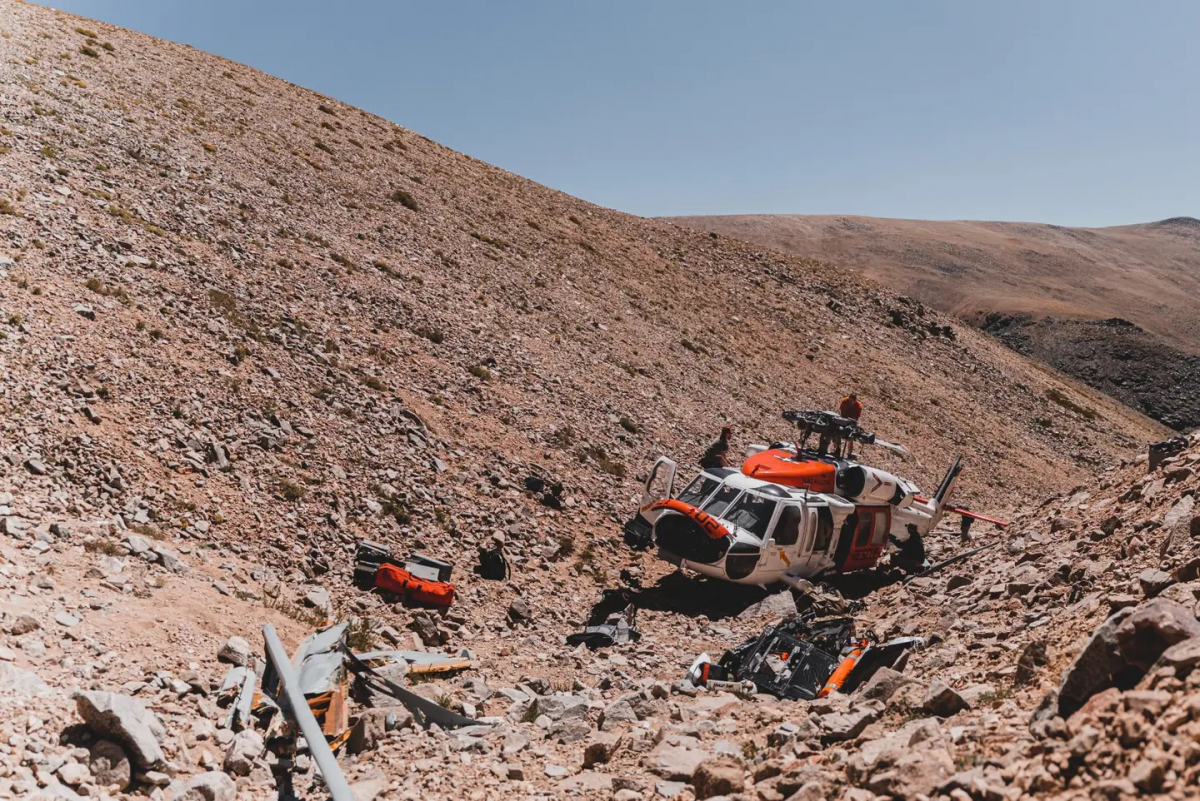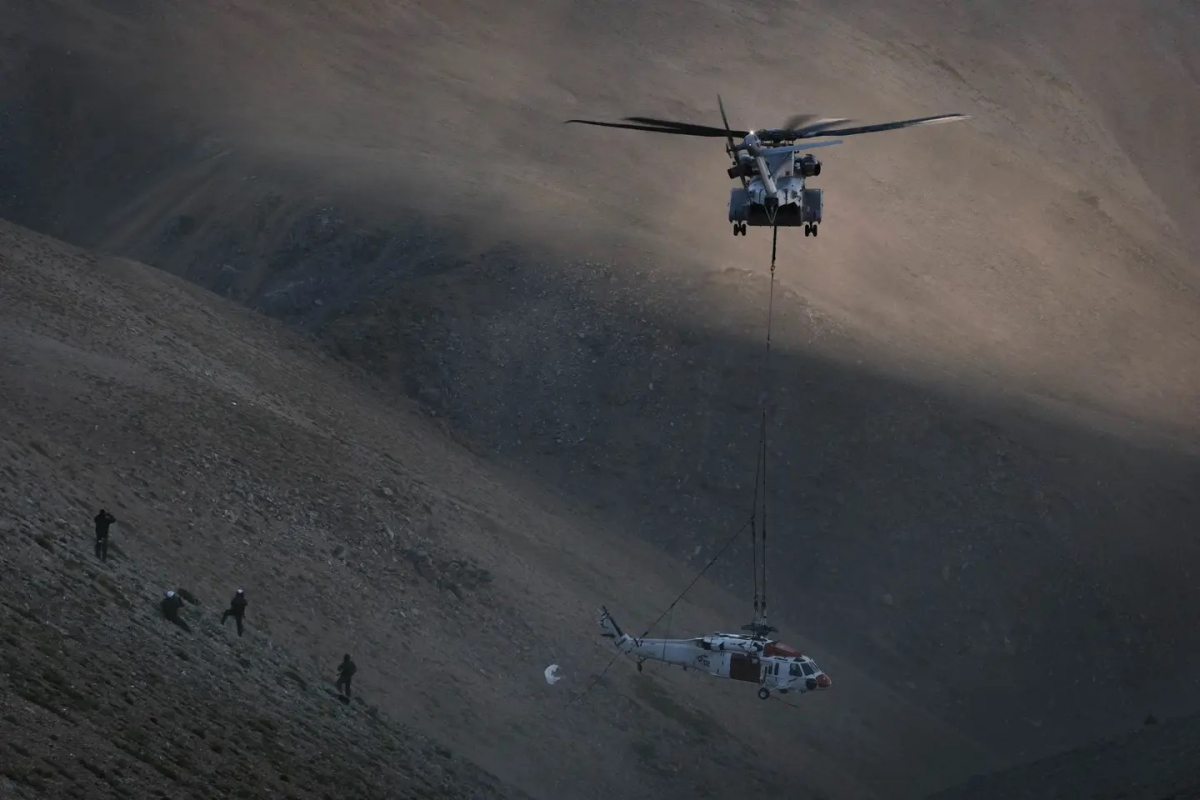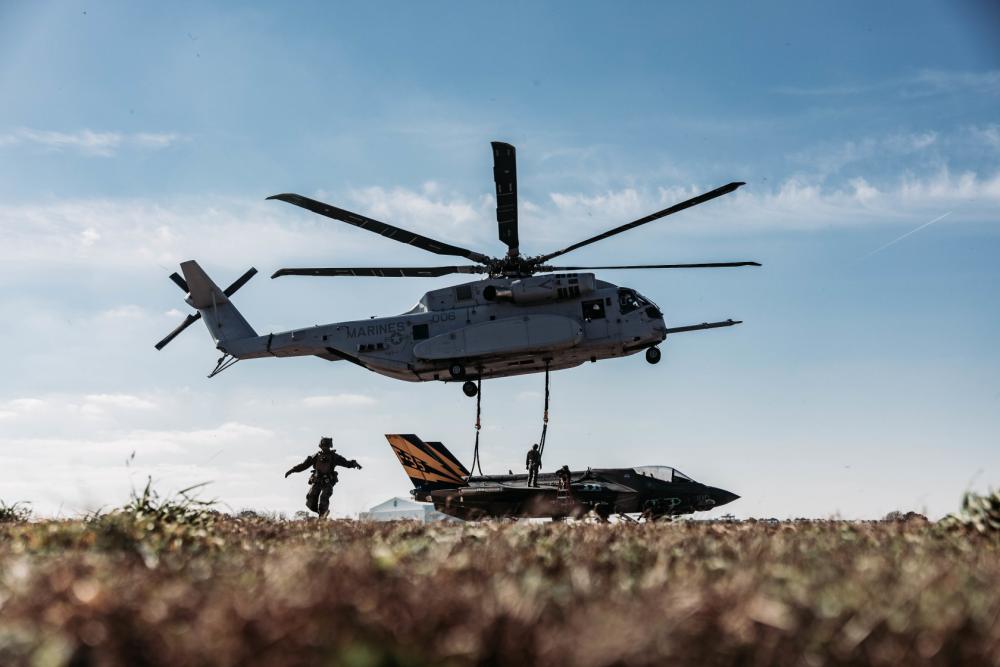The CH-53K continues to confirm its lifting capabilities by slinging the CF-01 prototype of the Lightning II's naval air version. The King Stallion, in addition to transporting troops and equipment, must also be able to serve as a flying crane to evacuate equipment damaged by the enemy or simply crashed. The CH-53K has already performed one such mission, recovering a crashed MH-60S in Nevada.
Lift certification
The CH-53K King Stallion heavy-lift helicopter is still in the testing phase at VMX-1. The purpose of this squadron is to evaluate and test new air equipment that will enter the Marine Corps (USMC). With this in mind, a lifting test was held at Patuxent River Air Force Base (Maryland, USA): as a true future flying crane for the USMC or in support of the other branches of the Pentagon, the CH-53K has to demonstrate its ability to sling many vehicles, aircraft, helicopters, etc. (maximum external carrying capacity of 16.3 tons). On January 23, it was the turn of the F-35 fighter jet to be lifted: the first CF-01 prototype of the F-35C was lifted by a CH-53K. In addition to lifting the aircraft, the King Stallion also performed a flight with the F-35 under sling.
It should be noted that this prototype is no longer in flying condition. Moreover, the retractable wing section was no longer present on the CF-01 at the time of this lift test.
A Plan B
As explained earlier, the CH-53K is a transport helicopter. This capability is intended to move almost all USMC equipment from one of the U.S. Navy's landing ships to shore. However, this certification is not intended to transport F-35s to forward bases: it is primarily intended to use the future King Stallions in downed or crashed aircraft recovery operations. Indeed, after their low damage, to simply avoid seeing a damaged or destroyed aircraft fall into enemy hands, the USMC must be able to have a heliborne means with important lifting capacities. For this reason, it is imperative that the latter successfully test lift a large number of vehicles and various aerial assets.
Already one lift mission under its belt
On July 13, 2022, a hiker attempting to climb Boundary Peak (4,007 meters above sea level, Nevada, USA) was not heard from again. A search was launched, including air support. However, a U.S. Navy MH-60 Knighthawk (Longhorn 02) involved in the search made a hard landing on July 16. The crew was safe, but had to wait until the next day for a CH-47 Chinook, which is better suited for high mountain rescue (the MH-60 site is located at an altitude of about 3,566 meters). On the other hand, the latter could not recover the Knighthawk without having to cut it into several parts.
After deploying personnel to the incident site, the U.S. Navy turned to the VMX-1: on September 4 and 5, two CH-53Ks were deployed to Bishop (California, U.S.A.) with the aim of recovering the MH-60S. The CH-53E Super Stallion, currently in service, was not chosen for this operation because the new CH-53K King Stallion has better flight capabilities in hot environments and at high altitudes. This first official lift operation for the CH-53K went well.




Découvrez cet article sur Air&Cosmos

